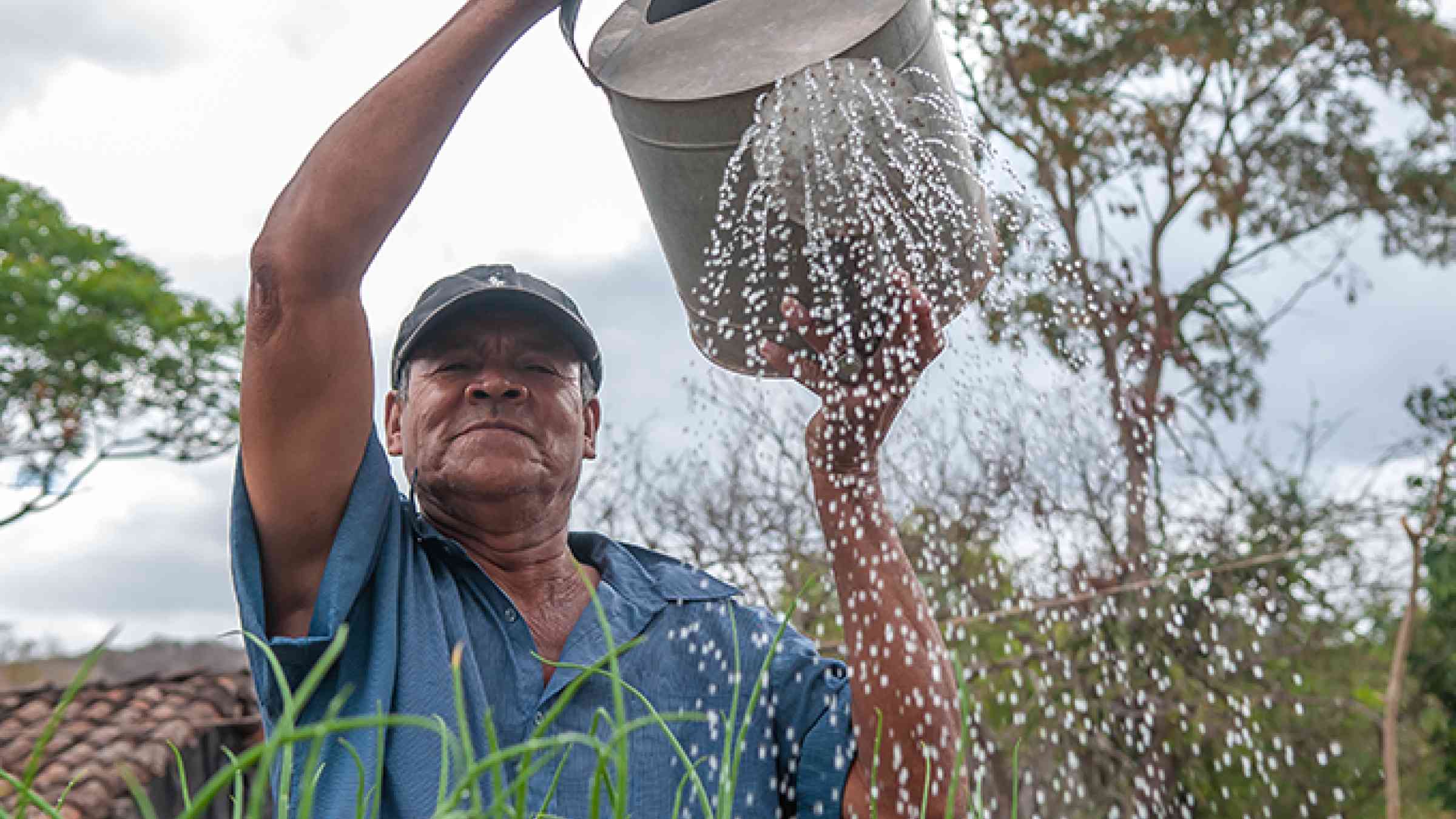Building community-based multi-hazard resilience in Nicaragua

Community groups improved local governance and disaster preparedness and assisted with health services for new migrants to better track COVID-19 cases in the community.
By Félix Rugama, Manuel von der Mühlen, Martha Emilia Alvarez, Stu Solomon
As part of the Zurich Flood Resilience Alliance, Plan International (Plan) has facilitated community groups to coordinate preparedness and response to flooding. This blog showcases how these groups leveraged their flood resilience capacity to respond to the outbreak of COVID-19.
Plan International (Plan), as part of the Zurich Flood Resilience Alliance, implements a flood resilience programme in four flood affected communities (Mechapa, Paniquines, Playones and Quilaca) in the municipality of El Viejo, department of Chinandega, in Nicaragua.
The need for flood resilience building in the area is well illustrated by this quote:
“[F]loods have done a lot of damage to us, our houses, our belongings. We have lost crops, animals, in short, when these things happen we are left in hunger and without knowing how to continue with our normal life.”
Member of the Preparedness and Response Committee from the Community of Quilaca, El Viejo, Chinandega, Nicaragua
Measuring resilience to understand the actions needed
We’re using the Flood Resilience Measurement for Communities (FRMC) to better understand the strengths and weaknesses in these communities and together with community members and local stakeholders develop activities that enhance flood resilience.
Our FRMC baseline study demonstrated the need to develop community groups where community members could coordinate the actions needed to strengthen their resilience.
Examples of such groups include: preparedness and response committees at community and school level, first aid and rescue brigades, or a voluntary network of community members to promote regional development.
These groups strengthen the community’s capacity in local governance, planning and leadership; and they are a starting point for a range of resilience and community development activities.
For example, when Nicaragua was affected by tropical storms “Iota” and “Eta”, these groups monitored the situation in their community and provided information to the municipality to help coordinate the emergency response.
Responding to the Coronavirus pandemic
The preparedness and response committees received training on resilience, in skills and topics like search and rescue and national disaster prevention laws. They were equipped with emergency kits and life vests.
This meant group members were well positioned to apply their newly gained knowledge and skills when COVID-19 arrived in their communities and coordinated response activities.
With the support of Plan, they informed local health departments about the arrival of migrants in need of testing so the department could coordinate communal health visits, and better track the origin of COVID-19 cases identified in the community.
Plan facilitated effective communication between the communities and local stakeholders by actively promoting collaboration, organizing meetings, and prompting group leaders to share their experiences with other communities and the local government, including the Ministry of Health, the Ministry of Education and the municipal Mayor’s Office.
Plan also worked with the newly established preparedness and response committees to coordinate distribution of hygiene kits to vulnerable households and install hand washing stations in the communities to help reduce the transmission of COVID-19.
Evidence of the multiple benefits of investing in flood resilience
The integral role that community groups took on in order to respond to the threat of the pandemic illustrates how the creation and training of these groups is building resilience, not only to floods but in a multi-hazard context.
The community groups had the skills and knowledge needed and felt empowered to take initiative to work with local key actors to adapt to the new situation brought by COVID-19 and to build resilience to multiple hazards in the future.
This will become ever more important as COVID-19 persists and overlaps with other hazards like floods in communities.